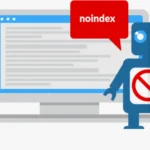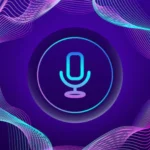7 Key Strategies to Reduce Bounce Rate

Strategies to Reduce Bounce Rate
The bounce rate is the percentage of visitors who left your blog or website from after viewing just a single page. It can hurt your SEO and also the engagement of readers to your pages. If the visitors come through search engine and bounce immediately it means your website is not relevant to the search inquiry and this thing search engine consider for ranking your website!
Not only this much, if the visitors like your post but bounce immediately, there is no chance of getting regular readers.
So here we got 7 Strategies to Reduce Bounce Rate. Let’s check out.
1. Improve Page Load Time
A factor that affects the bounce rate is the page load time. Main reason for this is simple no visitor likes to wait for a website to load. Many visitors will leave your site and bounce right off if it takes too long to your pages to load. There are many ways you can improve your website speed like you can optimize images by compressing them and making their size smaller without compromising quality.
Try to reduce the use of heavy scripts and enable browser caching. These methods will surely help you in speeding up your website load time. Fast-loading pages add to the user experience and are beneficial in reducing the bounce rate. Make sure your website is fast, or you’ll be in a disadvantageous position.
You May Also Like to Read: Myths About Bounce Rate
2. Good Mobile Optimization
Mobile friendliness is key in lowering your bounce rate, Lot of people are now accessing the web through their mobile devices more and more each year. To optimize your website for mobile always consider using responsive web design which allows your website to adjust its layout to fit the screen size it is viewed on.
To speed up your website’s load time, optimize your images and reduce your code to only that which is necessary. Make your website easy to navigate on mobile device by incorporating touch commands and using large fonts. Don’t send your users packing by giving them a reason to bounce due to your website’s poor mobile performance.
3. Create Engaging Content
One of the major factors that keep the visitors on your website is the quality and relevant content. To create such content, focus on writing compelling headlines that attract attention. Add images, videos and other graphics to break the plain text and provide visual aid to the visitors.
Use subheadings in structure of content and make it scannable. Readers love to read well-structured content that engages them and makes them want to stay longer on the website. This in turn improves various metrics including time spent on the website, bounce rate and many others.
4. Enhance Navigation and Overall User Experience
Good navigation patterns and a clutter-free structure are vital to maintain the audience on your website. Well-defined menus, internal links and easily accessible search options allow users to reach their desired destination in a hassle-free manner.
Avoid complicating your layout, instead simplify it to improve the overall user experience minimizing distractions. Organize your website in such a manner that visitors find it easy to move through different sections thereby lowering the bounce rates and forcing them to go deeper within your website
5. Use Clear Call To Action
Your website visitors get to your page via a particular path and may not be familiar with your navigation labels. Clear and appealing calls-to-action (CTAs) tell them what to do next to get what they want, This practice reduces bounce rates and increases additional engagement.
Create successful CTAs by making them conspicuous, using action-oriented words, and aligning them with user intent. Visitors may spend very little time on your site if they only want to download a white paper or PDF. You can encourage them to spend more time on your site by directing them to similar content or inviting them to sign up for a subscription.
6. Internal Linking Strategies
Whether it’s using text links in the body of your post, showing related blogs under each blog post, or displaying categories or recently published blogs in your sidebar, internal links help direct visitors to the other great content on your website.
If you have a particular blog that everyone must read, try using a slide-in popup as a call to action to read that specific blog post. Internal links help direct readers to other areas of your blog, increasing time on site and getting readers interested in other posts you’ve written.
7. Regular Content Updates
One of the options that can be outlined is updating content on a regular basis, which should come as no surprise given the fact that all the top-level strategies concern the issue of frequent updates. This means that you should post something new, replace the images once in a while and sometimes resuscitate posts and update on their content.
Fresh content not only boost up the website but also assures the viewers are more utilizing your blog as one of their reference point of credible information due to update contents that makes them to spend more of their time in browsing your blog rather than to go away.
Thanks For Reading: 7 Strategies to Reduce Bounce Rate
Partner With Naumaan Oman
Recent Posts
Working Together Ideas come to life
No matter how big your company is, as you expand and reach new highs you’ll want an agency to have your back. One with a process
360presence@gmail.com

© 2023 360PRESENCE All rights Reserved
















